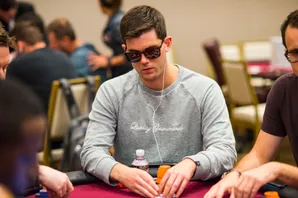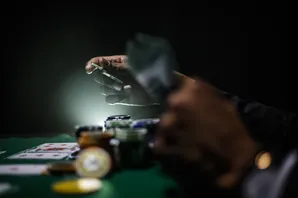
I’ve been doing very well recently when I 3-bet players opening pretty wide from the button. Still, I could eventually get exploited if people actually adjusted, but that rarely happens.
If I put pressure on an opponent on multiple streets, some players are even folding top pair to me by the river. If you’re folding top pair by the river, you’re just folding 80-90% of the time. The bottom line is you can really put pressure on people in that situation.
When most people say their opponents never fold, what they really mean is they don’t fold to their double barrels, or they don’t fold to normal bet sizes. But if you’re willing to triple barrel, if you’re willing to overbet, or willing to move all-in, you will actually start getting more folds.
Pressure helps them find folds. In this short video, I explain how pressure can be exerted out of position, for example, by 3-betting a preflop button raise from the big blind.
Leaks
Most of my students are not willing to apply pressure when they know their opponents are weak. They just automatically assume that their opponents are never going to fold on the river.
They think that because their opponent didn’t fold on the flop, and didn’t fold on the turn, they won’t fold on the river. But actually, if an opponent calls too much on the flop and the turn, that makes it a little more likely they’ll fold on the river.
Why? Because they’re getting to the river with so many awful hands that are going to be difficult to defend with. Their opponent thinks the pot is not that big on the flop or the turn, so they continue to call. Now, there is a huge bet on the river. What do they do now? Probably fold.
Out of Position: What Do I Do Now?
Let’s say you raise in early position, and a player calls you on the button. What type of flops should you be looking for to be able to continuation-bet most of the time?
One thing you can look for is a board with high cards. For instance, let’s say the board comes Q-J-2 rainbow. You have queens and jacks in your range, and more of them than your opponent probably does. It’s not that likely they have those hands. If there are draws on the board, and you want to keep putting pressure on them, there’s good reasoning to continue.
Another board I really like to pressure with is when there’s a flush draw on the board. Let’s say the board comes 9♠ 8♠ 3♣. You continuation-bet and your opponent calls. On a board like this, with flush draws and straight draws, there’s a good chance your opponent would want to raise with sets and two pairs to get value from their hand and protect it at the same time.
Why? Because most opponents, especially in North America, struggle to slow-play. They’ll feel silly if they let a hand get there, so they’ll probably raise with a set or two pair.
Pressure, Pressure, Pressure
If your opponents “never” fold to you, what’s likely happening is they’re calling too much on the flop and turn with mediocre pairs because they know you won’t fire the river. Mix in some triple barrels and overbets when they’re likely to have one weak pair on a coordinated board, and watch them wither away.
Corner them post-flop when they open too many hands in position and constantly call 3-bets. They won’t be able to defend themselves as you pile on the pressure.










